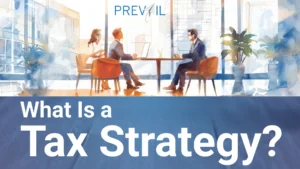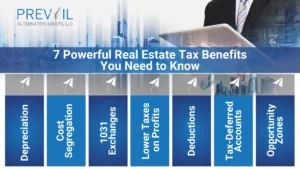When investing in private commercial real estate, you are leveraging the experience of professional teams who are often on the ground in various markets. Because of this, the possibilities as to the markets you could invest in are limitless, which can be both exhilarating and overwhelming at the same time.
In our experience, it doesn’t help at all to cross-reference “best real estate market” lists, to try making sense of current population trends, or even research news local to areas you’re interested in. Honestly, this will just waste a ton of time and energy – that’s what we’re trying to preserve, right?
Instead, begin by assessing your personal investing goals. Maybe you want to invest in the stable US economy and you’re looking for the security that comes with ownership of tangible assets. Or it’s possible you’re looking to secure your capital, escape political unrest, and build a legacy. Using that basic framework, this research checklist will help narrow things down:
- Job Growth
- Population Growth
- Job Diversity
- Landlord/Tenant Laws
- Taxes
- Geographical Features
- Cost of Living
- Local News
- Local Government
- Whether You Have a Competitive Advantage
Job Growth
Since steady job growth is indicative of a healthy local economy that’s likely attractive to new businesses, developers, and residents to the area, this is the most important metric to evaluate in each market.
Job growth is a leading indicator of population growth. The more jobs, the more residents, the more likely the area will maintain a strong tenant base. When more people are attracted to an area, the demand for housing increases, which drives up rent and real estate prices.
Population Growth
Since the population in a certain area could be affected by natural disasters, migration patterns, and more, you always want to research it after job growth.
Finding an area with long-term upward population growth trends (not a temporary bump) is key, and a major factor supporting that trend is job growth in the area.
These two metrics provide a full picture of the health and future of a given market.
Job Diversity
You want to find an area with a variety of industries supporting the local economy. Strong job growth is much less enticing if you discover that most of the jobs in the area are, say, in the tourism industry.
A recession or a negative news story could largely impact the number of tourists, and therefore the job growth and the population trend. A diversified job market is much more attractive since a hiccup in any single industry likely wouldn’t affect the area as a whole.
Landlord/Tenant Laws
Beyond the top 3 factors – Job Growth, Population Growth, and Job Diversity, the next best factor to learn about has to do with the laws governing rental properties.
Rent control, for example, is great for tenants but makes it incredibly challenging for landlords to make a return on an investment in an area where costs for contractors, pest control, and property management are skyrocketing.
As an investor, you want some insight from local property managers who are intimately familiar with these laws, so you can find landlord-friendly areas.
Taxes
While usually the last thing on investors’ minds, taxes can make a huge difference on the bottom line.
State income taxes and property taxes will both impact your operating budget thus, your overall return. Each state has a different tax structure and it’s good to understand what you’d potentially be getting into, so you won’t be surprised later.
Geographic Features
No matter where you’re physically located, you can use Google Maps to check out the actual, physical landscape of the area in which a potential deal is located. Look for physical barriers like a body of water, a mountain range, or any other geographical features that could inhibit the physical development of the area.
As an example, coastal cities are limited by the ocean. Development can only get so close to the water, which forces them to build upward or expand into the suburbs. This drives up the value of the centralized real estate, especially in a time of job and population growth.
Cost of Living
By seeking out an area where the cost of living is low, especially in comparison to the median income in the area, you’re more likely to experience growth. If people can afford to live in the area easily, there is room for the cost of living (i.e., rent) to rise as more jobs and people move into the area.
Local News
While the other, previously listed factors are much more important, once you’re pretty “sold” on a certain area, you may want to track a few local news stories.
It would be great to have some heads-up about new companies moving to (or away from) the area, local announcements, community developments, and anything else that would allow a sense of understanding of the local economy and the potential future of that market.
Local Government
Just as with the local news, the local government is indicative of the area’s future standings. It’s a good idea to invest in areas with strong local leaders who support new initiatives, an expanding local economy, and whose vision includes making the market vibrant and welcoming.
Strong leadership from the local government is attractive to corporations, which means that job growth will continue.
Whether You Have A Competitive Advantage
There’s always the chance that you have greater insight into a certain area, more so than other investors. Maybe you have a close cousin or best friend who lives there, maybe you went to college there, vacationed there, or grew up there.
Any time you possess a competitive advantage, more weight should be given to that market. Local connections or a little history with a particular area can put you leaps and bounds ahead of other investors.
Conclusion
As a passive investor, even though you’re not doing the work of choosing individual properties, you must still do your own due diligence on the markets in which you plan to invest. That way, you can ensure that those are stable markets that meet your investing goals.
For more insight into our favorite markets thus far, give us a call; we can get to know your objectives, answer your questions, and help expand your confidence and knowledge in real estate syndication investments. Talk to you soon!
This communication is neither an offer to sell nor a solicitation of an offer to buy any security. An offer may only be made via a written offering document by Prevail Innovative Real Estate Opportunities, LLC (“Prevail”). Prevail will provide such offering documents (“Documents”) only to qualified accredited investors and has prepared this communication solely to enable you to determine whether you are interested in receiving additional information about it or the real estate project summarized above (the “Project”). This communication must be read in conjunction with the Documents prior to making any investment decision. Information about the Project contained herein has not been audited or reviewed by any third party. While projections about the Project’s future performance is based on Prevail’s experience and good faith judgments, the recipient should understand that projections are based on numerous assumptions, including that the current economic environment continues, that existing asset performance trends will continue to track business plans, that historical behavior of the Project’s property type will not change, that perception of market opportunities for disposition will hold true, and that the competitive landscape within which the Project operates will not change. Returns to investors would be contingent upon numerous events occurring and subject to considerable risks. Significant assumptions were made by Prevail to calculate the presented projections, including assumptions on the amount of leverage used by the Project, the Project having sufficient assets and cashflows, debt service and capital expenditures, the continuation of favorable leasing terms, the operating costs for the Project, the costs of taxes and insurance, the absence of claims against the Project, that lease terms (including rental rates) continue, that projected occupancy and rollover rates continue, that management and other expenses remain constant, and that property-level debt will not need to be refinanced at less favorable terms. The Project’s future capitalization will be contingent upon numerous events occurring and subject to considerable risks. The occupancy and rollover rates of the Project will be dependent upon many factors beyond the control of the Project or Prevail. Any expression of targeted rates is merely a statement of a goal. Significant assumptions were made by Prevail to calculate the presented occupancy and rollover rates. Many factors can impact the Project’s after-tax returns, including the risk that tax laws may change. A myriad of factors may impact the Project’s ability to achieve any returns. Any number of factors could contribute to results that are materially different. All investment opportunities presented by Prevail involve substantial risk and may result in the loss of some or all of your investment.



















